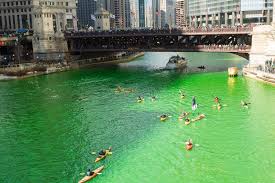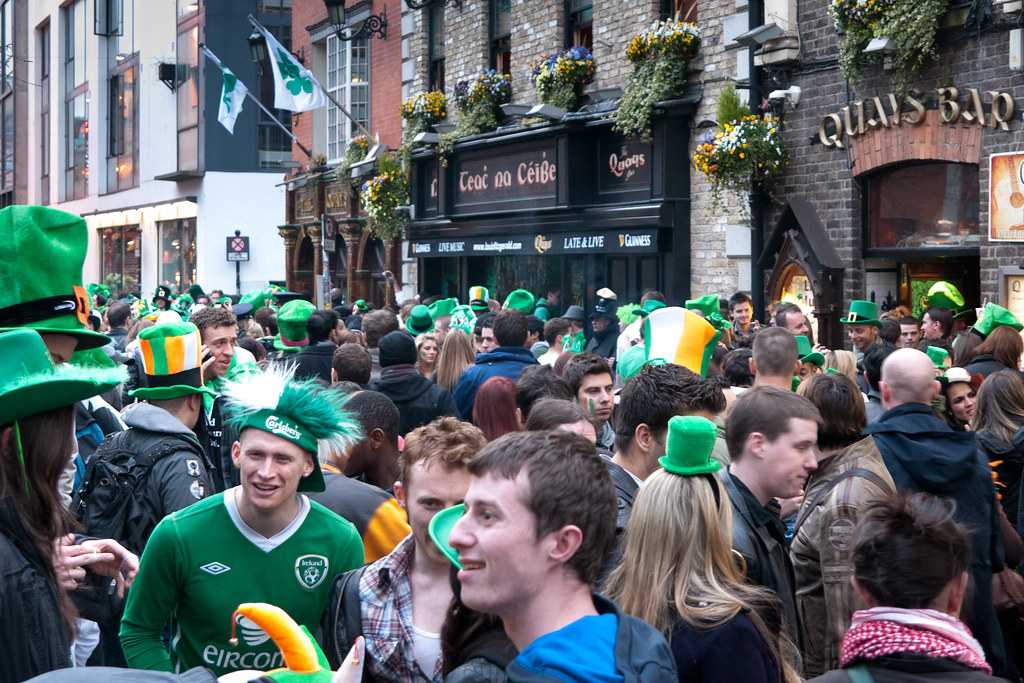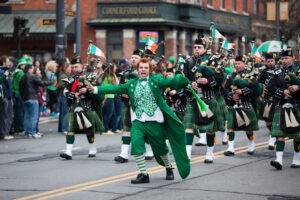St. Patrick’s Day is celebrated in the U.S. with fun traditions like dyeing Chicago’s river green. But it began in Ireland. Here are 10 surprising facts about its history and symbols, and how people still celebrate it today.
St. Patrick’s Journey
St. Patrick’s Day is named after him. He wasn’t born Irish. He was from Britain. He became a slave in Ireland. Then he escaped or was let go. Later, he came back as a priest. He converted Druids to Christianity. We celebrate his life on March 17. That’s the day he died.
St. Patrick’s Day: 9 Astonishing Facts
1. St. Patrick’s Day: From Catholic Feast to Cultural Celebration
Originally, St. Patrick’s Day was a Catholic Feast Day for St. Patrick. It started in 1631. But Irish immigrants in the U.S. changed it. Now, it’s about Irish pride and culture, celebrated worldwide.
2. St. Patrick and the Shamrock
St. Patrick used a shamrock to teach about Christianity. The shamrock has three leaves. It represents the Father, Son, and Holy Spirit in one. An Irish botanist named Caleb Threlkeld talked about this in 1726.
He said the shamrock is also a symbol of Ireland. But historians say this story might not be true. They say the shamrock isn’t a real plant. Instead, it became linked to Ireland during fights against Britain in the 1700s.
3. The Origin of Green on St. Patrick’s Day
Green is linked to St. Patrick’s Day because of Irish uprisings. In 1641, during the Great Irish Rebellion, Catholics revolted against the English using green flags. Then, in 1798, during the Irish Rebellion, they wore green again. A song called “The Wearing of the Green” made green famous. Before these revolts, blue was the color for Ireland.
4. St. Patrick’s Day Parades in America
In the U.S., the first St. Patrick’s Day parade happened long ago. The very first one was in 1601 in Florida. Irish soldiers later marched in Boston in 1737 and in New York City in 1762. These parades marked the Catholic Feast Day of St. Patrick. Over time, they became big events in American cities.
5. How St. Patrick’s Day Grew in Ireland
St. Patrick’s Day got popular in Ireland with government support. In the early 1950s, Irish-Americans inspired a parade in Dublin to show off Irish industry. Dublin Tourism ran the parade from 1970. Then, in 1995, a St. Patrick’s Day Committee was formed.
They made the festival longer, first a weekend, then a week. The Irish government got behind it with a campaign in 1995. That’s how St. Patrick’s Day became a big celebration in Ireland.
6. The Story of Leprechauns
Leprechauns started in Irish stories. They were believed to be magical fairies bringing luck or causing trouble. The oldest story mentioning leprechauns tells of three fairies dragging a king into the ocean. In the 19th century, leprechauns were pictured as grumpy shoemakers guarding gold. Disney made them cheerful, starting the way we see them now.
7. Lucky Four-Leaf Clovers: Real but Rare
Four-leaf clovers are rare but real. Vincent Pennetti from the University of Georgia says it’s a recessive trait. While common clovers have three leaves, the lucky ones have four. They’re associated with Saint Patrick’s Day, adding charm to the holiday.

8.Dyeing the Chicago River Green
Decades ago, a union in America started dyeing the Chicago River green. It’s a big celebration on St. Patrick‘s Day. They use about 40 pounds of eco-friendly dye. Back in 1955, city workers began using green dye to find sewage in the river.
The idea came when a guy from the plumber’s union saw a plumber’s clothes stained bright green. Then, in 1962, they dyed the whole river green for a whole week. This tradition still happens today. On March 16, before St. Patrick’s Day, they dyed the river green again. People watched as it turned emerald green. It’s a fun tradition that Chicago keeps alive every year.
9. Irish-American Dish: Corned Beef and Cabbage
Did you know? Corned beef and cabbage is from the U.S., not Ireland. Irish immigrants in America made it. They swapped bacon for cheaper beef. They cured beef with corn-sized crystals, calling it “corned.” They paired it with cabbage, a cheap veggie. In Ireland, it’s not a popular dish. So, while Americans eat it on St. Patrick’s Day, Irish folks probably won’t.
Read latest news at regular scoop platform.


